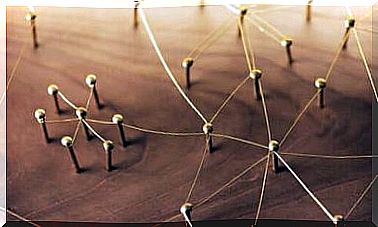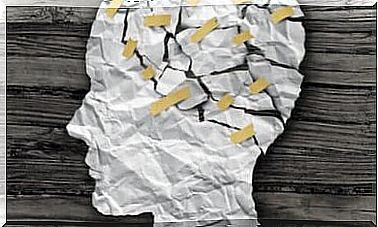Cognitive Biases: When We Don’t Think, We Can Make Mistakes

What do you know about cognitive biases? We make a lot of decisions in our daily lives. Most of them quickly, almost without thinking. The truth is that we rarely assess the consequences that each of the options we have in mind would entail if we chose them as a solution.
At other times, especially when we believe decisions matter, we evaluate the information we have to find the best option. However, something that we hardly take into account when making decisions are the cognitive biases that influence the solutions we imagine and give. These biases are dangerous in that they can lead us to make unrealistic decisions.
However, cognitive biases and heuristics are not bad. We could say that they are sorts of mental shortcuts (somewhat treacherous at times). In this sense, we say they are shortcuts because we use them to save cognitive resources (mental energy).
For example, if every time I go to a bar, I spend half an hour thinking about which drink will be the most appropriate, evaluating each of its components separately and together, I will end up tiring and wasting the time I could invest in other matters. Therefore, heuristics and cognitive biases will make our thinking faster, saving resources that we will use in other more important tasks.

two ways of thinking
According to Daniel Kahneman, there are two ways of thinking. This author puts the two ways of thinking into two systems he calls “thinking fast” and “thinking slowly.” The first system, by which we think fast, is automatic. This system generally operates below our level of consciousness. Emotions greatly influence this type of thinking and often lead to stereotyped thoughts. Its function is to generate intuitions that can help us but also betray us.
The second system corresponds to slow thinking. This kind of thinking is less frequent and requires more effort. This thinking occurs consciously, as opposed to quick, logical and calculating thinking. Its main function is to make the final decisions, after observing and controlling the intuitions of quick thinking.
The first system tends to be more dominant. In contrast, the second system tends to be lazier. Normally, we let ourselves be guided by quick thinking. A trend that can have negative repercussions, such as jumping to conclusions, exaggerating the effect of first impressions, confusing causal relationships, and over-relying on data we already know (without taking into account other data that are also available).
Thought heuristics
A heuristic is considered a shortcut to active mental processes and is therefore a measure that saves mental resources. Since our cognitive (mental) capacity is limited, we share resources, dedicating a greater amount to those elements that need more mental work, such as concerns, activities, people, etc.
We can walk without paying attention, but if the path is bumpy and we believe we may trip and fall, we will give you more cognitive resources, attention and watch where we step. Among the existing heuristics, some of the most important are:
- Availability heuristic: is used to estimate the probability of an event occurring, as we rely on previous information we have. People who watch a lot of television, given the large amount of violence that appears, believe that many more violent crimes are committed than people who watch less television.
- Simulation heuristics: People tend to estimate the probability of an event based on how easily they can imagine it. If it’s easier to imagine, it’s more likely to happen. When there is an attack, it is easier to think that it was committed by jihadists than by groups that attack less often or whose way of acting is different.
- Anchoring heuristic : used to clarify uncertainties, taking as a reference a starting point, the anchor, which we then adjust to reach the final conclusion. If my team won the championship last year, I’ll think it’s more likely to win it again this year, even though in its entire history it’s only won once.
- Representativeness heuristic: inference about the probability that a stimulus (person, action, event) belongs to a certain category. If an individual has been a good student of the scientific disciplines and we find him a few years from now wearing a white coat, we will assume that he is a scientist, not a butcher. But in reality, we’re not sure.

cognitive biases
Cognitive biases are psychological effects that distort thoughts. Like heuristics, biases have the function of saving cognitive resources. Although they can lead to mistakes that can be serious, in certain contexts they lead us to make faster and more effective decisions. Some of the best known cognitive biases are as follows:
- Confirmation bias: the tendency to investigate or interpret information that confirms preconceived ideas. If we invest in the stock market, we will seek opinions from the press, blogs and forums that confirm our investment ideas, ignoring comments to the contrary. Likewise, if we buy a car, we will look for items that highlight its positive characteristics, thus obtaining a reinforcement for our decision.
- False consensus bias: is the tendency to believe that one’s own opinions, beliefs, values and habits are more widespread among the rest of the population than they really are. If I’m against the death penalty, I believe that most people in my country think the same way as I do.
- Matching bias: better known as fundamental attribution error. It is the tendency to place undue emphasis on other people’s explanations, behaviors, or personal experiences. If a classmate drops out of a test they both took for a particular course, you are likely to say they are lazy and not interested in studying.
- Retrospective or a posteriori bias: the inclination to see past events as predictable. When they fire a co-worker, we say that we already knew what would happen because the company was not at a good time. However, before he was fired, we wouldn’t have predicted.
Knowing cognitive biases and heuristics will make us more efficient in making decisions. Though difficult to avoid, impossible at times, thinking biases can be reduced by knowing how they operate. Evaluating all the alternatives and looking for information that supports and contradicts our initial beliefs is one way to reduce them. Also, avoiding bias can make our thinking much more creative.









